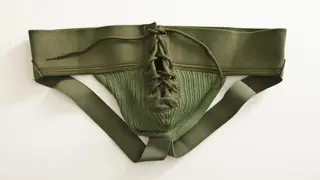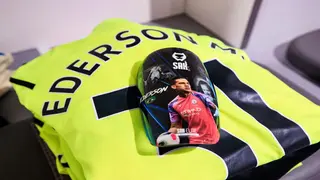What are the lacrosse rules and regulations? How to play the game
Other Sports
Which lacrosse equipment do players use, and what are their purposes? Lacrosse players do not touch the balls using their hands but instead use sticks and webbed baskets to pass or score. Here is a list of other gear lacrosse athletes use and their significance.

What equipment is needed for lacrosse? Male and female players use different gear, but most are similar. In the 10-a-side game, players use sticks and webbed baskets to carry and shoot the ball into the opposing team's net. So, which lacrosse equipment do athletes use?
What do you need to play lacrosse? The attire and tools used to play the sport facilitate the game but also play a protective role because of the sticks and hard rubber balls. Numerous sources like Lacrosse Ball Direct and Study have highlighted more about the sport and listed the common equipment used. Here is a breakdown of lacrosse equipment and their names.
What are the lacrosse rules and regulations? How to play the game
Other Sports
Helmet |
Chest protector |
Lacrosse stick |
Gloves |
Goggles |
Mouthguard |
Protective cup |
Arm pads |
Shoulder pads |
Rib pads |
Chin pads |
Leg pads |
Throat guard |
Helmets are worn primarily by male lacrosse players to prevent them from face and head injuries that could lead to concussions. The helmet is not mandatory for female players because women's lacrosse is a semi-contact sport. According to Denver, efforts to make female athletes wear helmets mandatory have gained momentum, with some opposing the move.
Lacrosse helmets have a broad frame of view to ensure the player sees the field well. They have adjustable buckles and straps, making them suitable for various head sizes, and they also have a chin strap to protect the chin.

A chest protector is among the most essential equipment for lacrosse players. It consists of thick padding shielding the chest from high-speed shots that sometimes surpass 110 miles per hour. The impact of shots could cause chest injuries.
What is a jockstrap for sports and what is it used for?
Other Sports
The lacrosse stick is undoubtedly the most significant of all lacrosse equipment and their uses. Players customize their sticks to their preference and style of play. The primary use of the stick is to shoot the ball. Kiel Marisz, a professional lacrosse player cited in an interview with Sniper Skin,
There is a special bond that all lacrosse players have with their sticks. Many professional lacrosse players say they have slept with their stick at some point in their lives. In Native American culture, they believe the lacrosse stick is an extension of their own bodies.

Lacrosse players wear gloves to protect their hands from the impact of handling the stick and avoid hand injuries or bruises. Gloves should also be comfortable enough for the player to catch and throw the ball.
The padding absorbs some impact, ensuring the players' hands are maximumly protected. Goalie (goalkeeper) gloves have additional thumb protection as they are more likely to use the finger.
Soccer equipment list: Essentials a footballer needs to have
Football

Lacrosse goggles are worn primarily by women players. They have caging that protects the eyes and enhances vision. Players can customize them to improve their aesthetic value.
A mouthguard is an essential tool on the lacrosse equipment list. It protects the mouth and face from injuries and is also known as a gum shield or sports guard. It covers the teeth and mucosa to prevent trauma to the teeth, lips, and jaws.

Protective cups are optional but essential for male players. They are worn beneath the shorts or tracksuits to provide comfort and protection. They shield the groin and other sensitive areas from injury. Some cups come as all-in-one briefs and are fitted to suit the athlete's body size.
Arm pads, also known as arm guards, cover most players' hands and elbows. They are protective gear from the defence's attacks and are made of rugged plastic cups and cushioning material. Players use them to make contact with attackers.
A list of the best looking soccer cleats ever made: which is your favourite?
Football
Lacrosse shoulder pads are made of padded material with minimal plastics and are worn to protect the athletes' shoulders, collarbone, and sternum. Only male lacrosse players wear shoulder pads.
The shoulder pads come in different designs, including traditional, hybrid, and shoulder liners suited for specific positions. However, traditional pads offer the most protection and are made of a hard-shell casing and removable bicep pads. More recently, the pads have become less bulky, allowing the players more mobility.

Rib pads, sometimes known as kidney pads, are worn over the ribs and kidneys by male players. They offer additional protection to the torso's sides, preventing impact on the ribs and kidneys. They come with straps to fit comfortably and not restrict breathing.
Chin pads protect the chin from being hit with the lacrosse stick. They are made of cotton, foam, and neoprene and have adjustable chin straps.
Ice hockey vs field hockey: Key differences and similarities
NHL
Leg pads cover the area between the thigh and toes, preventing them from injuries during play. They come in different sizes based on the age of the wearer.
A throat guard, also known as a throat protector, is used by goalkeepers to prevent shots from hitting their trachea. They hang loosely from the helmet for easy handling.

Lacrosse equipment serves functional and protective roles, helping the players perform their best to prevent injuries on the pitch. Here are some frequently asked questions about the gear.
Both male and female players wear lacrosse gloves. They protect the hands from impact and injury, enabling the player to handle the ball and stick effectively.
The mouthguard or mouth protector covers the teeth and mucosa and prevents the mouth from injury caused by the stick's impact.
Do soccer players wear protective cups? If not, should they wear them?
Football
Players must learn how to use the lacrosse equipment to ensure their safety as they compete on the pitch. The equipment varies between male and female players, although some are similar for both genders.
READ ALSO: What are the lacrosse rules and regulations?
Sports Brief published an article detailing the rules and regulations of lacrosse. Native Americans founded the contact sport, and the players' objective was to get the ball into the opponent's net. The game features two teams of 10 players each, including a goalie. Check out the link above and get acquainted with the sport.